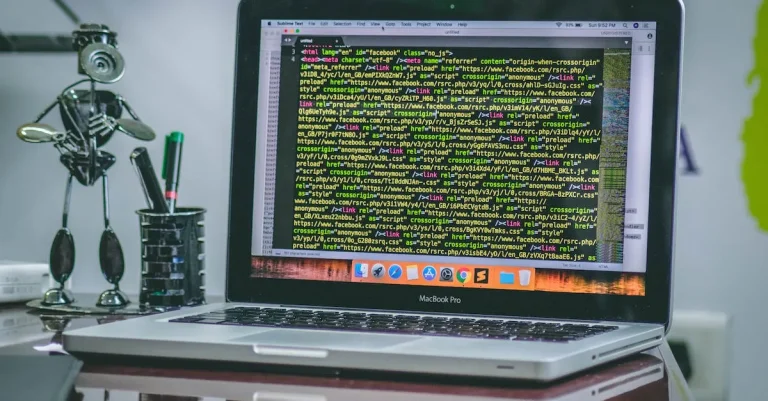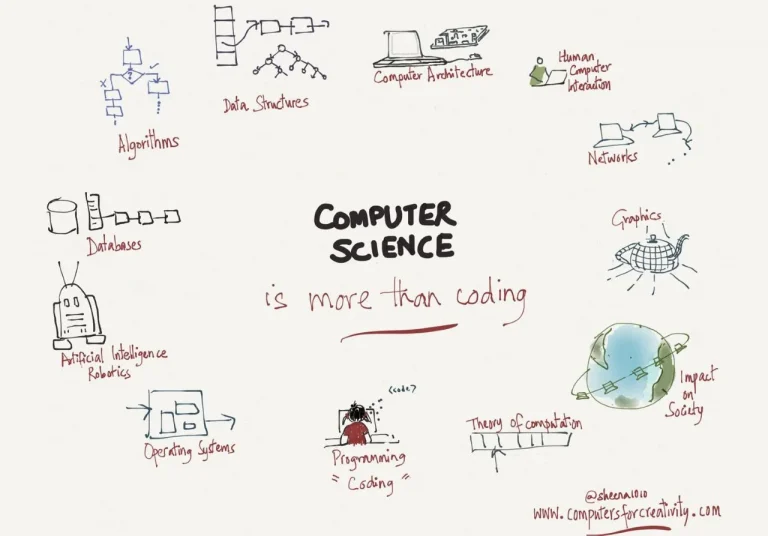What Is A Call In Computer Science?
In computer programming, a call is an instruction that tells a program to execute a certain function or procedure. Understanding calls is key to grasping how programs operate behind the scenes.
If you’re short on time, here’s a quick answer to your question: A call in computer science is an instruction that activates a function or procedure so that the code inside it will run. Calls allow code reusability and modularity.
Defining a Call
In computer science, a call refers to the act of invoking a function or procedure in a program. It is an essential concept in programming languages as it allows for the reuse of code and the execution of specific tasks.
Activation of Functions and Procedures
When a call is made, it activates a function or procedure that has been defined in the program. This means that the code within the function or procedure is executed, and any instructions or calculations are carried out.
The call essentially tells the program to “jump” to the specified function or procedure and start executing the code inside.
Passing Arguments and Returning Values
One of the key aspects of a call is the ability to pass arguments to the function or procedure being called. Arguments are values or variables that are provided to the function or procedure, allowing it to perform specific operations or calculations based on the provided input.
These arguments can be of various data types, such as integers, strings, or even other functions.
Additionally, a call can also return a value back to the calling code. This return value is the result of the function or procedure’s execution and can be used in further calculations or operations. It allows for the communication of data between different parts of the program.
Difference Between Call and Invoke
The terms “call” and “invoke” are often used interchangeably in computer science, but they do have slight differences. In general, “call” refers to the act of initiating the execution of a function or procedure, while “invoke” typically implies a more formal or explicit method of calling.
For example, in some programming languages, the term “invoke” is used when calling a method or function associated with an object. It emphasizes the idea that the method is being invoked on a specific instance or object.
However, the overall concept remains the same, regardless of the terminology used.
Understanding the concept of a call is fundamental to programming, as it allows for the organization and execution of code. By making calls to functions and procedures, programmers can create more structured and efficient programs.
Advantages of Using Calls
Reusability
One of the key advantages of using calls in computer science is the ability to reuse code. When a call is made to a specific function or method, the code within that function is executed. This means that instead of writing the same code multiple times, it can be written once and called whenever needed.
This greatly reduces the amount of duplicate code and makes the program more efficient and maintainable. For example, if a program requires a calculation to be performed in multiple places, instead of writing the calculation code each time, a call can be made to a function that performs the calculation.
Modularity
Calls also promote modularity in computer programs. Modularity refers to breaking down a program into smaller, self-contained modules or functions. Each module performs a specific task, and these modules can be called and combined to create more complex functionality.
This makes the program easier to understand, debug, and maintain. It also allows for better collaboration among developers, as they can work on different modules independently. For example, in a web application, different modules can be created for handling user authentication, database operations, and user interface rendering.
These modules can then be called as needed to create the desired functionality.
Abstraction
Using calls promotes abstraction in computer programs. Abstraction refers to hiding the implementation details of a function or method and exposing only the necessary information. This allows the programmer to focus on the high-level functionality of the program without needing to understand the inner workings of each function.
Calls provide a way to abstract complex operations into simple function calls, making the code more readable and easier to understand. For example, a call to a function named “calculateAverage” abstracts the details of how the average is calculated, allowing the programmer to focus on the result rather than the algorithm.
Types of Calls
In computer science, a call refers to the process of one program or subroutine invoking another program or subroutine. There are different types of calls that can occur in computer science, each serving a specific purpose.
Understanding these types of calls is essential for developers and programmers to effectively design and implement their software.
Direct/Immediate Calls
Direct or immediate calls are the most straightforward type of call. In this type of call, a program directly invokes another program or subroutine by using a function call or subroutine call. The control flow passes from the calling program to the called program, and once the called program completes its execution, the control flow returns to the calling program.
Direct calls are commonly used for modular programming, where different parts of a program are divided into separate modules or functions. These calls allow for better organization and maintainability of code, as well as the ability to reuse code segments.
Indirect/Non-Immediate Calls
Indirect or non-immediate calls refer to a situation where the program does not directly specify the program or subroutine to be executed. Instead, the decision of which program to call is determined at runtime.
This type of call is often used in scenarios where the program needs to dynamically select a subroutine based on certain conditions or user inputs.
One common example of an indirect call is the use of function pointers in programming languages like C or C++. Function pointers allow for the flexibility of choosing different functions to be executed at runtime, depending on the situation.
This dynamic nature of indirect calls can be particularly useful in certain algorithms or systems.
Recursive Calls
Recursive calls occur when a program or subroutine invokes itself. This technique is commonly used in programming to solve problems that can be divided into smaller subproblems. In a recursive call, the function or subroutine calls itself repeatedly until a specific condition is met, at which point the recursion stops.
Recursive calls can be a powerful tool for solving complex problems, as they allow for a concise and elegant solution. However, it’s important to handle recursive calls carefully to avoid infinite loops and excessive memory usage.
Understanding the different types of calls in computer science is crucial for developers and programmers. By utilizing the appropriate type of call, they can design efficient and maintainable software that meets the needs of their users.
Call Stack
In computer science, a call stack is a mechanism used by programming languages to keep track of function calls. It is a data structure that stores information about the active function calls in a program.
Understanding the call stack is crucial for understanding how programs execute and how they manage memory.
Push and Pop Operations
The call stack operates using two main operations: push and pop. When a function is called, it is pushed onto the call stack, which means that its information is added to the top of the stack. This information includes the return address, local variables, and any other information necessary for the function to execute.
When a function finishes executing, it is popped off the call stack, which means that its information is removed from the top of the stack. The return address is used to determine where the program should continue execution after the function call.
This process of pushing and popping functions onto and off the call stack allows for the sequential execution of a program.
Last In, First Out (LIFO)
The call stack follows the Last In, First Out (LIFO) principle, which means that the last function that was pushed onto the stack is the first one to be popped off. This ensures that the function calls are executed in the reverse order in which they were called.
Imagine a stack of books – the last book placed on top is the first one to be removed.
Prevents Infinite Recursion
The call stack also plays a crucial role in preventing infinite recursion. Recursion is a programming technique where a function calls itself. Without a call stack, recursive functions could potentially keep calling themselves indefinitely, leading to a stack overflow and crashing the program.
However, the call stack imposes a limit on the number of function calls that can be made, preventing infinite recursion and ensuring the program’s stability.
Understanding the call stack is fundamental to understanding how programs execute and how they handle function calls. It provides a way for programs to keep track of the execution flow and manage memory efficiently.
To learn more about the call stack and its role in computer science, you can visit GeeksforGeeks or freeCodeCamp.
Calling Conventions
In computer science, a calling convention refers to the rules and conventions that dictate how functions or procedures are called and how parameters are passed between different parts of a program. It is an essential aspect of programming languages and plays a crucial role in ensuring that the correct data is passed and executed efficiently.
Who Cleans Up the Stack
One important aspect of calling conventions is determining who is responsible for cleaning up the stack after a function call. In some conventions, such as the cdecl convention, the caller is responsible for cleaning up the stack.
This means that the function itself does not remove the arguments from the stack, and it is the responsibility of the caller to do so. On the other hand, in conventions like the stdcall convention, the callee is responsible for cleaning up the stack.
This makes the function call more efficient, as the caller does not need to handle the stack cleanup.
Passing Arguments
Another crucial aspect of calling conventions is how arguments are passed to functions. There are various ways in which arguments can be passed, including passing them via registers or by pushing them onto the stack.
The choice of passing mechanism depends on the architecture and the specific calling convention being used. For example, some conventions may specify that the first few arguments are passed via registers, while the remaining arguments are passed on the stack.
ARM and x86 Conventions
Two widely used calling conventions are the ARM and x86 conventions. The ARM calling convention, commonly used in mobile devices and embedded systems, specifies that the first four arguments are passed via registers, while the remaining arguments are passed on the stack.
Additionally, the ARM convention requires the callee to preserve certain registers, ensuring that they are not modified during the function call.
On the other hand, the x86 calling convention, used in most desktop and server systems, typically passes function arguments on the stack. It also defines specific registers for storing function return values and provides guidelines for stack alignment.
The x86 calling convention is designed to be compatible with older x86 processors and is known for its flexibility and ease of use.
Understanding calling conventions is essential for developers to write efficient and compatible code. It ensures that functions are called correctly and that data is passed and handled appropriately. Different programming languages and architectures may have their own specific calling conventions, so it’s crucial to understand and adhere to the conventions relevant to the system being developed.
Conclusion
In summary, a call in computer science activates a function or procedure so that the code inside it executes. Calls promote reusability, abstraction, and modularity. The call stack organizes and keeps track of active calls using LIFO ordering.
Different programming languages follow calling conventions that define details like cleaning up the stack and passing arguments. Understanding calls is key to being an effective programmer in any language.







